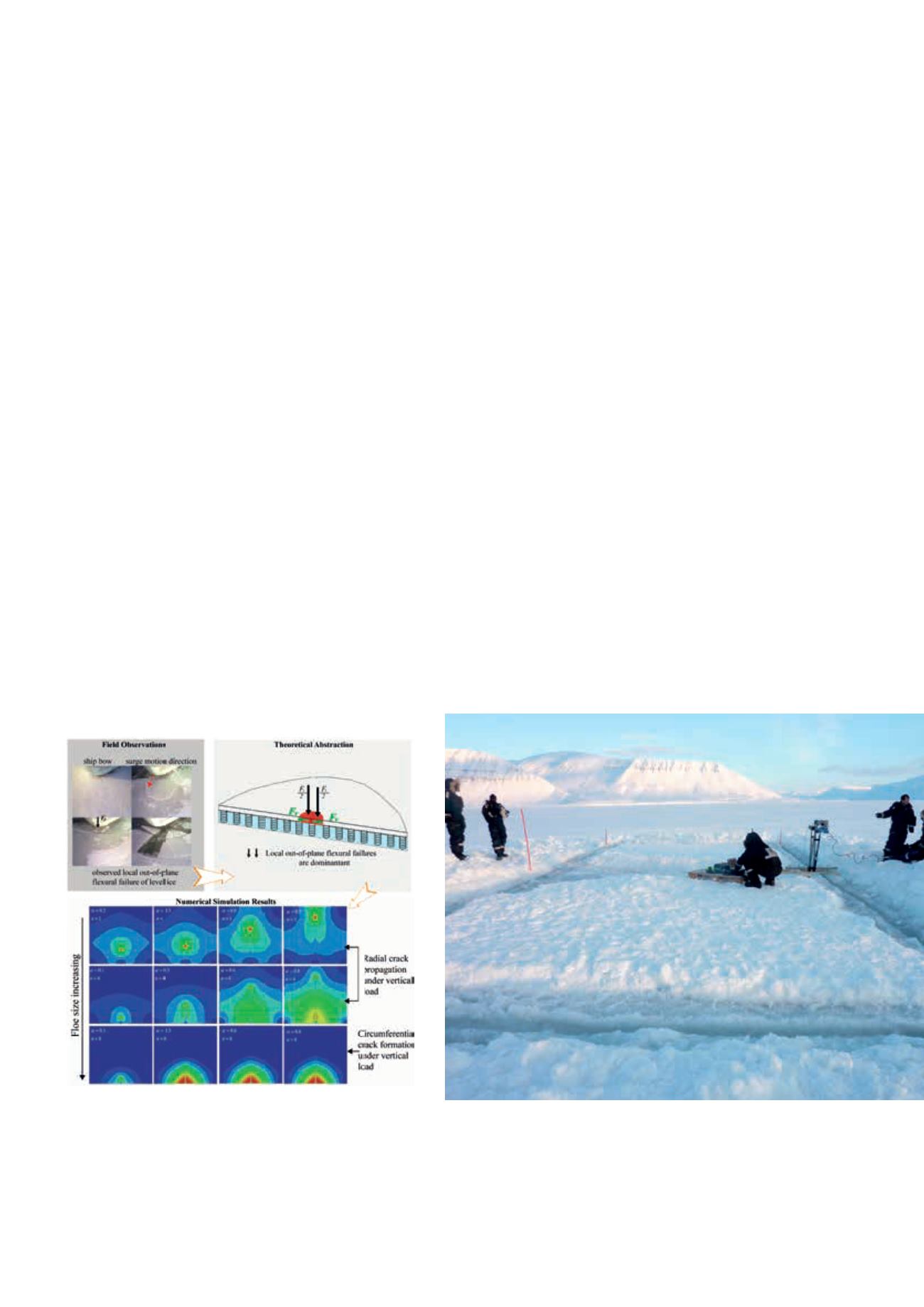

39
SAMC
o
T
• ANNUAL REPORT 2015
Fracturing of ice:
In 2015, Dr Wenjun Lu continued his research work cover-
ing the fracturing of sea ice. In addition to the frequently
observed splitting failure mode, some other important
out-of-plane failure modes were identified and studied
theoretically. Figure WP4_3 depicts the so called ‘radial
cracking’ of an ice floe under a vertical contact load that
has been studied numerically. The Figure shows how the
radial crack propagates (i.e.
= 2 ,…, 80 percent of the floe
size) within ice floes of different sizes (i.e., n=1, 4, 8 is an
increasing size number that represents the ratio between
floe size and the characteristic length of a plate on an
elastic foundation). In short, this figure shows that small
ice floes fail by radial cracking while large ice floes fail by
circumferential crack formation.
Combining with previous studies, all these different failure
modes constitute different scenarios during ice-floe ice
interactions. The ability to capture these different failure
modes will give a reasonable estimate of the ice fracturing
load depending on floe ice’s size, confinement and the inter-
action speeds. It is expected that the analytical solutions of
these different failure modes will be implemented in the
numerical simulator so as to cover a simulation over a
large temporal and spatial scale.
Apart from the fracturing of a single ice floe, the practical
advantage of parallel channel-induced fracturing events,
which are beneficial for an ice management operation, also
caught Lu’s eye. Its fracture principle is similar to other
fracture events. A series of theoretical and experimen-
tal efforts have been made to study the parallel channel
fracturing processes. The objective is to study what paral-
lel channel spacing would lead to an efficient ice manage-
ment operation (i.e. to better control the broken ice size
within neighbouring channels).
Moreover, as a preparation for the full tests in March 2016
to acquire the fracture properties of sea ice, a trial test
was carried out in March 2015 together with a preliminary
theoretical analysis on the fracture test design (see Figure
WP4_4). The trial test was conducted at Svea, Spitsbergen.
The test was theoretically designed and the equipment was
tested in the field. The Ditch Witch trencher proved to be
an effective tool for cutting large ice sheets. Based on the
experience obtained in this trial test, a new test campaign
is scheduled for March 2016. The objective of this test is
to acquire the fracture properties of sea ice (e.g., fracture
toughness, fracture energy and the traction-separation
curve). These quantities are important in describing the
fracturing process of sea ice, especially considering that
the traction-separation curve is an indispensable material
property in computational mechanics used to simulate the
fracture initiation and propagation within most materials
(e.g., concrete, metal, fibre reinforced plastics, etc.)
Figure WP4_3. Continuation of theoretical studies on different
fracture patterns of ice floes (e.g. different out-of-plane failure
scenarios are depicted depending on the floe sizes).
α
Figure WP4_4. A trial campaign in the field to acquire the
fracture properties of sea ice.
Photo: Sveinung Løset
















